Nora Volkow: Motivated Neuroscientist
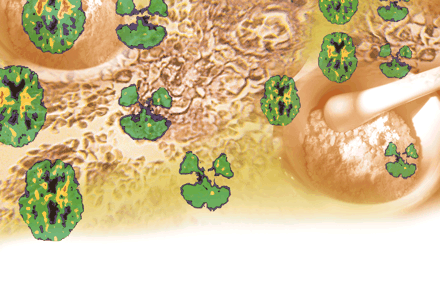
Nora Volkow claims to have always been curious about the workings of the human brain. Even as a medical student in her native Mexico, she investigated animal behavior with the ultimate goal of understanding human motivation. Upon completing her medical studies, in the early 80s, she moved to the U.S. to take advantage of emerging neuroimaging technologies, first during her psychiatry residency at New York University and Brookhaven National Laboratory, and then as a faculty member at the University of Texas in Houston. In Houston, Volkow embarked on seminal studies into human drug use and the functioning brain, which she continued to pursue, again at Brookhaven, during the subsequent two decades. Volkow established herself as an eminent researcher and proponent of neuroscience, and her insights into the brain have greatly advanced our appreciation of human behavior and motivation. In 2003, she took up her present position as Director of the National Institute on Drug Abuse.
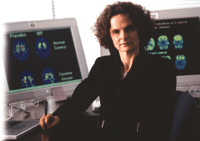
MI: What was the state of brain imaging studies when you entered the field in the early 1980s?
NV: It was just starting! Very few studies had been done at that time with positron emission tomography—the first studies had been done in patients with schizophrenia and in patients with Alzheimer’s disease. I had come to New York University to do my residency training in psychiatry, and at the same time I started to collaborate with the Brookhaven National Laboratory on imaging. My first project was on the use of imaging to detect early biochemical transformation in brain tumors, and that work was published in Science. But I was also very interested in the psychotic process, so I then immediately started working with schizophrenia, investigating the changes in brain activity that were associated with symptoms and how these were affected by medication. When I finished my residency, I moved to Houston—they had a fantastic imaging center at the University of Texas (UT). At that time, there were no schizophrenic patients in the Hospital I was working in at UT, but there was an increasing number of patients being admitted with cocaine addiction, and because stimulants can produce psychosis, I started to investigate cocaine abusers—as a different way to assess mechanisms that underlie psychoses. But what I found instead, as soon as I started to image the cocaine abusers, was that they had significant changes in perfusion (blood flow) to their brains. Indeed the brains of some of the cocaine abusers had areas that appeared as microinfarcts, which was extremely surprising, because it was generally believed, at the beginning of the 80s, that cocaine was a relatively benign drug. For the next three years of my life, I devoted myself to corroborate that cocaine abusers had abnormal blood flow into their brains, presumably as a result of the vasoconstricting effects that cocaine has on blood vessels. It took a long time for me to get the work published, for it was an unexpected finding at that time; since then, many people have replicated that finding. Now it’s generally recognized that cocaine can produce infarcts in the brain both via vasconstrictions as well as hemorrhage that in certain instances can be severe enough as to produce paralysis.
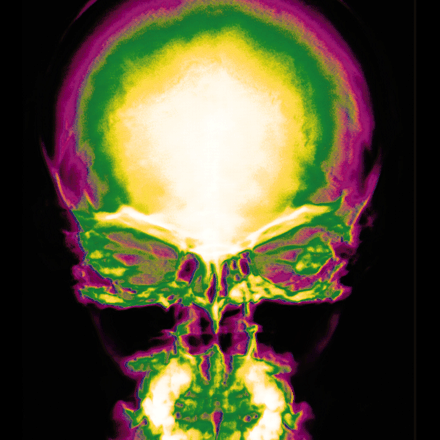
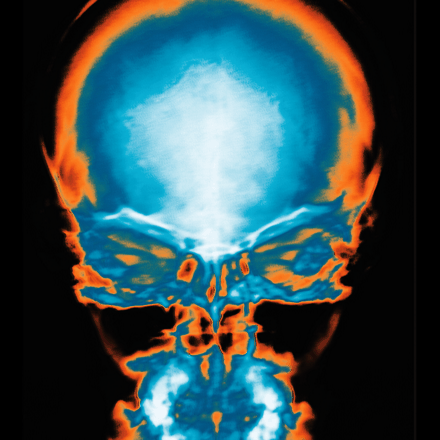
MI: Where did you first get those findings on cocaine toxicity published?
NV: I sent the first paper on blood flow abnormalities to the New England Journal of Medicine in 1986, where it was rejected because the reviewers felt that the evidence was not sufficient to suggest that cocaine was damaging. The paper was finally published in the British Journal of Psychiatry in 1988. Subsequently, many reports have clearly confirmed that, indeed, cocaine produces damage to blood vessels and produces infarcts and microhemorrhages. Clinical reports have also been published documenting paralysis after cocaine ingestion.
MI: Was the resistance to your new findings due to the novelty of imaging technology or was the resistance primarily to the idea that cocaine was toxic?
NV: Well, I think it reflected the fact that I was a new investigator not known to the field, that I was using a new technology for which there were very few studies to document a finding that went against the general notion that cocaine was a relatively safe drug. But that is the nature of the game. I think that it happens to everybody—it’s the process.
MI: Your work fundamentally touches on the dopaminergic system. What should we appreciate about dopamine and the addicted brain?
NV: Dopamine was first appreciated for its role in movement control, but dopamine also drives many other circuits that allow you to do things in everyday life: for example, it’s extremely important in motivation and drive. If you destroy dopamine cells in areas involved with those functions, you really have very severe disruptions in motivation —motivation for eating, for example. Transgenic animals that don’t have dopamine die because they lack the motivation to eat regardless of whether its tasty food or not. It’s as if dopamine signaling tells the brain, “This is important—it’s salient. Pay attention!” For example, pleasure is salient: it’s the way that nature makes us do things that are important for survival. Aversive events are also very salient. Dopamine is involved in mechanisms that ensure long-lasting memory of salient events. It’s an incredible thing. Whenever there is something new or unexpected in your environment, it will immediately grab your attention—that’s mediated in part by dopamine! Drugs of abuse directly activate this system that says, “This is salient. Pay attention!” So, by activating the same mechanisms that subserve basic behaviors that are required for survival, the abuser’s brain “learns” that drugs are “very important.” But the drug-induced mechanism of dopaminergic “learning” is distinct from normal lines of behavior. Normally, once the novelty of a situation is gone, dopamine cells no longer fire; after you’ve eaten, dopamine no longer signals food as salient. But the abused drug directly impinges upon the dopamine cell, so that the message of novelty, or saliency, is not terminated—it persists even after repeated administration. Drugs directly or indirectly stimulate the dopamine cells, interfering with messages from the cortex that give the signal to stop firing, and so the signal continues to be transmitted, strengthening the message that is salient.
MI: Was the dopaminergic system in cocaine addiction understood when you got into the field?
NV: Well, in general, people thought that drugs of abuse were taken because they produce pleasure by increasing dopamine, and so people tended to invoke the involvement of limbic areas and the notion that people were addicted because they wanted that pleasurable response. But while doing imaging with addicted patients, one of the commons complaints I heard was that, in many instances, the drug was not even pleasurable, and yet the addicted patients could not stop taking it. And my imaging results told me that the cortex—the whole frontal area—was consistently abnormal in addicted subjects regardless of whether they were cocaine abusers, marihuana abusers, or alcoholics. This was also completely unexpected, because at that time the literature in animal models of addiction had mostly concentrated on changes that occur in the limbic areas of the brain with chronic administration of drugs. What was also fascinating about the imaging results was that the areas of the frontal cortex that were most affected in addicted individuals were the orbitofrontal cortex and the anterior cingulate gyrus: These two areas had been linked to obsessive/compulsive disorders by imaging studies! This naturally intrigued me, because ultimately, addiction manifests itself as a compulsive disorder—a compulsion to take the drug, and an obsessiveness about the need to take it. Just as obsessive/compulsive patients, who know cognitively that they shouldn’t be washing their hands repeatedly, cannot control their behavior, so it is for cocaine addicts. The desire is extremely, extremely intense, despite the fact they cognitively know they should not take it. If they don’t get the drug, there is a sense of tremendous discomfort.
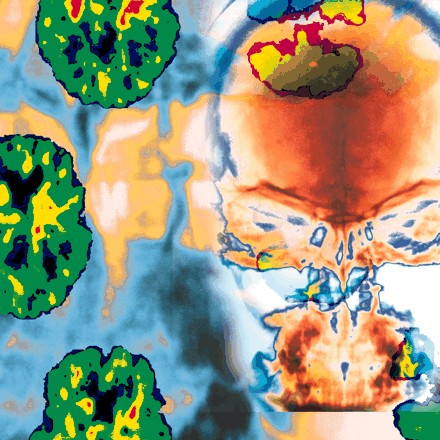
MI: So, the concept that has been popularized—that drug addiction parallels obsessive/compulsive tendencies —came out of your imaging studies?
NV: The clinical definition of drug addiction entails the compulsive behavior. What my initial imaging studies did was to shift attention to the importance of the frontal cortex in the process of addiction and in particular of the orbitofrontal cortex in compulsive drug administration; however, from day one of this finding, I have been careful not to imply that drug addiction and obsessive/compulsive diseases are equivalent diseases. They are not the same; they are targeting the same brain areas, namely the orbitofrontal cortex and the anterior cingulate gyrus. Thus, the symptomatology overlaps. For example, if you damage the orbitofrontal cortex in animals, they will manifest persevarative behaviors: they will excessively drink water, or eat, or groom themselves. They lose the ability to shift their attention away from a stimulus that is normally salient in a context-dependent manner alone (for example, under conditions of thirst or hunger or dermal irritation). Such behavior parallels what the drug addict will tell you: they’ll say, “I don’t even know why I’m doing it [substance abuse], because it is not pleasurable. I just cannot stop it.” The drug creates a new “basic” need.
MI: Despite imaging studies that show brain alterations, there is still resistance to the notion that addiction is a disease. What’s wrong about thinking of addiction as a matter of free will, rather than as a disease?
NV: Well, in addition to disruption of the orbitofrontal cortex and regulation of saliency, there’s the anterior cingulate gyrus, which is the area that is involved with inhibitory control. And inhibitory control really is key to mediating conflict between wanting to do something that is driven by limbic desire on the one hand and cognitive recognition that you shouldn’t do it on the other. Now normally, we can bring cognitive processes in the prefrontal cortex and anterior cingulated gyrus to bear against emotional responses generated in the limbic system. However, in the drug-addicted person, that area is dysfunctional, so they cannot properly inhibit unhealthy impulses. So, it’s like when the brakes in your car don’t function, and an onlooker says, “You should have stopped at that red light! Why didn’t you brake?” In addition, the whole prefrontal area is affected, which is involved in rational thought and judgment. So, addiction is not only a problem of inhibitory control but also of cognitive disruption, and this is supported by experimental studies.
MI: To what extent have you had to attend to educating the public about the disease processes of addiction and to making analogies like the one between malfunctioning brakes and the addict’s loss of inhibitory control?
NV: Well, much more so now that I’m NIDA Director, because although I did do a lot of lay talks previously, most of my work and interactions were at scientific meetings, where these issues don’t come to the center. I have encountered, along with my colleagues, some objection to putting forth the concept that drug addiction is a medical disease, and sometimes people have alleged that this concept removes personal responsibility from the addict for his or her behavior. But this allegation is a complete absurdity: the fact that you have a disease does not take away personal responsibility! All adults with a medical disease have to take responsibility for it; whether you have cancer or cardiovascular disease or diabetes, you have to take responsibility to do the correct things, including changes in lifestyle and taking medication. The drug addict also has these responsibilities.
MI: Right, but the cancer patient is never accused of not having a disease—or of not taking responsibility. Why does this type of argument face you as NIDA Director more than it would, for example, the Director of the National Cancer Institute?
NV: It is very simple—there are two elements to it. Addiction touches on the most basic aspects of behavior, involving our ability to control our urges and desires, and it’s much harder for people to realize that inadequate “choices” or poor “control” can reflect disruptions of how an organ in the body works—the brain. It’s much easier for a person to conceptualize that if you have a myocardial infarct, you really have a “disease.” And the consequences of cardiovascular disease are more apparent: the heart is damaged; damage produces an inability of the heart to pump blood to the body, which if severe enough and/or not treated can lead to death. It’s much harder for the general public to conceptualize that if your brain is not functioning properly, you are going to have an inability to restrain yourself from taking the drug. Addiction is a disruption of the motivational circuitry such that it no longer responds to natural reinforcers, and yet the addicted person becomes conditioned to respond to drug—just as Pavlov’s dogs salivated when they saw the light that in the past had signaled the arrival of food.
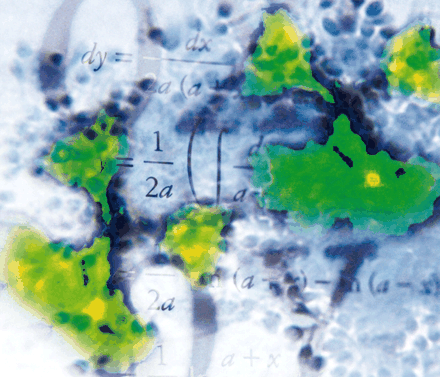
The second element that has worked against the drug addiction field, in terms of public health education, is the fact that the consequences of drug addiction are quite widespread. The disruption of the addict’s main motivational drive leads to very disruptive behaviors within society. The need to procure the drug is so intense that the addicted person sometimes acts in ways that can harm others. Also, when people are intoxicated, their behavior can lead to accidents that hurt others. This generates a lot of anger from those affected. The person that has cancer, on the other hand, does not so typically disrupt the physical security of others.
MI: Do you as Director of NIDA have to address the societal anger that is sometimes directed toward addicts?
NV: It is important, because there is a social stigma that is attached to drug-addicted people, and this stigma can tend to isolate people from treatment. It’s our human nature to generalize, and so if there’s an instance where an intoxicated addict crashes a car and harms someone, we might assume that drug-addicted people in general are harmful and should be avoided. Yet isolation is one of the most stressful things to the human brain, and animal studies indicate that isolation and the associated stress facilitate drug self-administration—it becomes one of these vicious cycles. So, I see it as my task to bring to light the other side—the suffering of the person who is addicted, the suffering of the family of the addicted person, and the notion that this can happen to anyone. Children and adolescents are particularly vulnerable to addiction; we must consider the child that is exposed to a drug, takes it, and—on account of peer pressure or a genetic predisposition or whatever—becomes addicted. It’s a Russian roulette, after all. Some children may experiment with drugs and yet go on to lead successful lives without becoming addicted. In the end, addiction is not a choice! It’s like the person who chooses to begin smoking cigarettes—but we don’t assume that the person chooses to have cancer of the lung. The person who chooses to take a drug doesn’t choose to develop an “addicted” brain.
MI: Your involvement in addiction research has led you to a position where you are charged to make an impact on public health. Have you always seen that as part of your own mission, in getting into science?
NV: Well, even before I came to NIDA, as a scientist, the notion of producing knowledge that was not going to be utilized was never attractive to me. I’ve always been aware of the responsibilities that all scientists have to communicate their findings in a way that can be accessible to those who can can take advantage of it: to physicians, to parents, to teachers. Adolescents should also have direct access to scientific knowledge, so they don’t act in complete darkness. One of the reasons that there has been such a radical reduction in smoking is that people came to realize the adverse consequences; when they had the knowledge, they began to make the decision not to smoke. We also have to be able to communicate effectively: what is salient to kids, for example, is not what is salient to adults. Our challenge is to understand how to prepare messages so that they can be readily grasped.
MI: You’ve talked about addiction in terms of specific brain alterations. How is the work that NIDA supports different from that of the National Institute of Neurological Disorders and Stroke (NINDS) or of the National Institute of Mental Health (NIMH)?
NV: And the other institute that comes to mind would be the National Institute on Alcohol Abuse and Alcoholism. Well, we [at NIDA] go after drug addiction, and as a researcher in the drug abuse field, I have been studying for many years the effects of stimulant drugs, like cocaine and methamphetamine. But stimulants are also extremely important because they are the most widely prescribed psychoactive drugs for children, and the use has been escalating. In fact, just before coming to NIDA, I had gotten a grant from NIMH to study individuals who have attention-deficit/hyperactivity disorder (ADHD). I’ve also been involved in the area of aging in the human brain, because if you want to understand the variety of changes that occur in disease you really need to understand normal variation and how this is influenced by aging and gender, for example. So, there is interaction among different Institute missions.
Now, to me as NIDA Director, the number one priority that I speak about is to develop knowledge that will optimize prevention of drug abuse; the other priority is treatment. One way that we can prevent drug addiction is to target comorbidity: Individuals that have mental illness are particularly vulnerable to drug addiction, at all ages. Because we want to prevent drug abuse right now, we should target kids who have mental illnesses such as ADHD, conduct disorder, depression, and learning disabilities; if we don’t treat them properly, if we don’t identify them, they will end up abusing drugs. The comorbidity for using illegal drugs—as well as for cigarette smoking—is very high, and early identification is extremely important. Correspondingly, early use of drugs can produce neurological problems, and epidemiological studies show that in many instances drug abuse precedes and some even hypothesize that it could trigger mental illness. So, in terms of collaborations across NIH institutes, issues of comorbidity are very important: How do you do early evaluations so that you can prevent drug abuse and other diseases? How do you treat patients that are comorbid?—patients who are depressed and then start to take cocaine; schizophrenics that are taking stimulants; patients with anxiety that become dependent on benzodiazepines; depressive patients who want to stop smoking but cannot because cessation of smoking triggers relapse to their depression? We have multiple collaborations already among the National Institutes of Health. Dr. Zerhouni [NIH Director] is very interested in the creation of a blueprint of neuroscience at the NIH that would optimize inter-institute collaborations. Beyond neuroscience per se, drug abuse is a major contributor to the national medical burden. We have appreciated for some time that it contributes to cancer, and a more recent development is its very significant contribution to the epidemics of HIV/AIDS here and in the whole world. And so, right now, multiple Institutes are coming together to identify those projects where scientists can create knowledge that will be beneficial across disciplines.
MI: What is it that motivates you as NIDA Director— particularly with regard to the social responsibilities that you now bear?
NV: Well, I’ve seen many Institute directors who immediately communicate a personal sense of social responsibility. After all, they’re being given budgets made from taxpayers’ money. And you have the responsibility to help: That’s your cause! You have a mission—so if you’re in the cancer institute, how can you help those afflicted and prevent it? If you’re in drug abuse, it’s the same responsibility. So, the role of Director is intimately tied with a social impact. I view it as a unique opportunity. I’ve been studying drug addiction and the effects of drugs on addiction since I started medical school when I was eighteen years of age. Now I am in a position to help develop this knowledge further, to help those afflicted and their families. So, yes, it’s a big responsibility, but also an incredible opportunity, absolutely.
- © American Society for Pharmacology and Experimental Theraputics 2004



